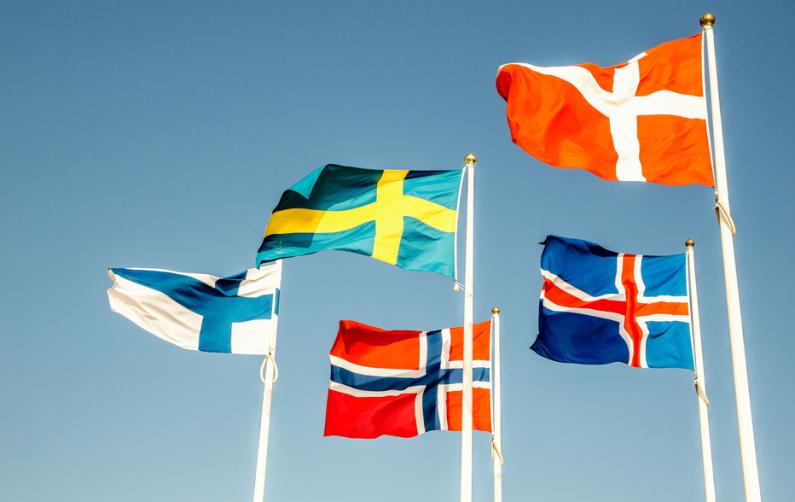
The North Germanic language group, which is often referred to as Scandinavian languages, comprises of five languages, and is a subgroup of the Germanic languages.
In addition to Norwegian, Danish, Swedish, and Icelandic, Faroese is also part of this language group, which is spoken by about 20 million people.
North Germanic separated from West Germanic at the turn of the era approximately and since then, five dialects have developed in very different ways into the languages used today. While Swedish, Danish, and Norwegian have absorbed many European influences, Faroese and Icelandic have remained much closer to the original Old Icelandic.
Therefore, for the sake of simplicity, the Scandinavian languages can be divided into two.
Comparison of Scandinavian languages Swedish, Danish & Norwegian
Below are a few facts about the Scandinavian languages Swedish, Danish, and Norwegian:
- Swedes, Danes, and Norwegians can understand each other well when they choose not to stick to the written language of their own countries.
- Norwegian and Danish in particular are very similar in vocabulary, but they differ significantly in sound.
- It is the other way round with Norwegian and Swedish. The two languages sound similar, but the vocabulary is different.
- For Norwegians, Danish often sounds different because the words are pronounced in a shortened form and the endings are left out. Therefore, Norwegians and Danes often turn to English when they need to have more in-depth conversations.
By the way: Finland is considered to be a Scandinavian country, depending on the definition, but Finnish is related to Hungarian, Sami, and Estonian and does not even belong to the Indo-European languages.
Icelandic and Faroese are more closely aligned to the original languages
In contrast to Danish, Swedish and Norwegian, Faroese and Icelandic are less developed, and each language has developed separately and in isolation.
One notable difference is in words borrowed from other languages. While the Icelanders prefer to create their own words, people on the Faroe Islands are happy to borrow words and are less concerned about preserving the pure original national language.
The Icelandic language can be compared to the Norwegian language from 1,000 years ago and Icelanders still use Norwegian grammar from that time. This, and a different pronunciation, distinguishes Icelandic from the other Scandinavian languages.
The Faroese script is similar to Icelandic, but it sounds completely different. The gap between the written and spoken language is so wide that it is difficult for untrained speakers to understand.
Language services for Scandinavian languages
As a translation agency, we are happy to work with native speakers and translate manuals, certificates, advertising brochures and many other documents from or into Scandinavian languages for you. Our range of services also includes certified translations, professional speakers, transcriptions, proofreading, DTP, or subtitles.
and receive an answer within a few hours
- Choose the service you require
- Get a quote
- Confirm and receive your order
FAQ on Scandinavian languages
What are the five Scandinavian languages?
The Scandinavian languages (also called Nordic or North Germanic languages) include Danish, Norwegian and Swedish, but also Icelandic and Faroese.
How many people speak Scandinavian languages?
It is estimated that Scandinavian languages are spoken by a total of about 20 million people today.
Are the Danish and Norwegian languages very similar?
The written Danish and Norwegian languages are very similar despite differences in vocabulary, but there are differences in pronunciation.
Which Scandinavian language is most similar to English?
Danish, Swedish and Norwegian are most similar to English. Icelandic and Faroese are the languages that have many more differences.
Which Scandinavian languages are easiest to learn?
Swedish and Norwegian are the easiest for native English speakers to learn because, for example, the languages have many words that sound similar to English words, such as vinter or sommer.
Add new comment